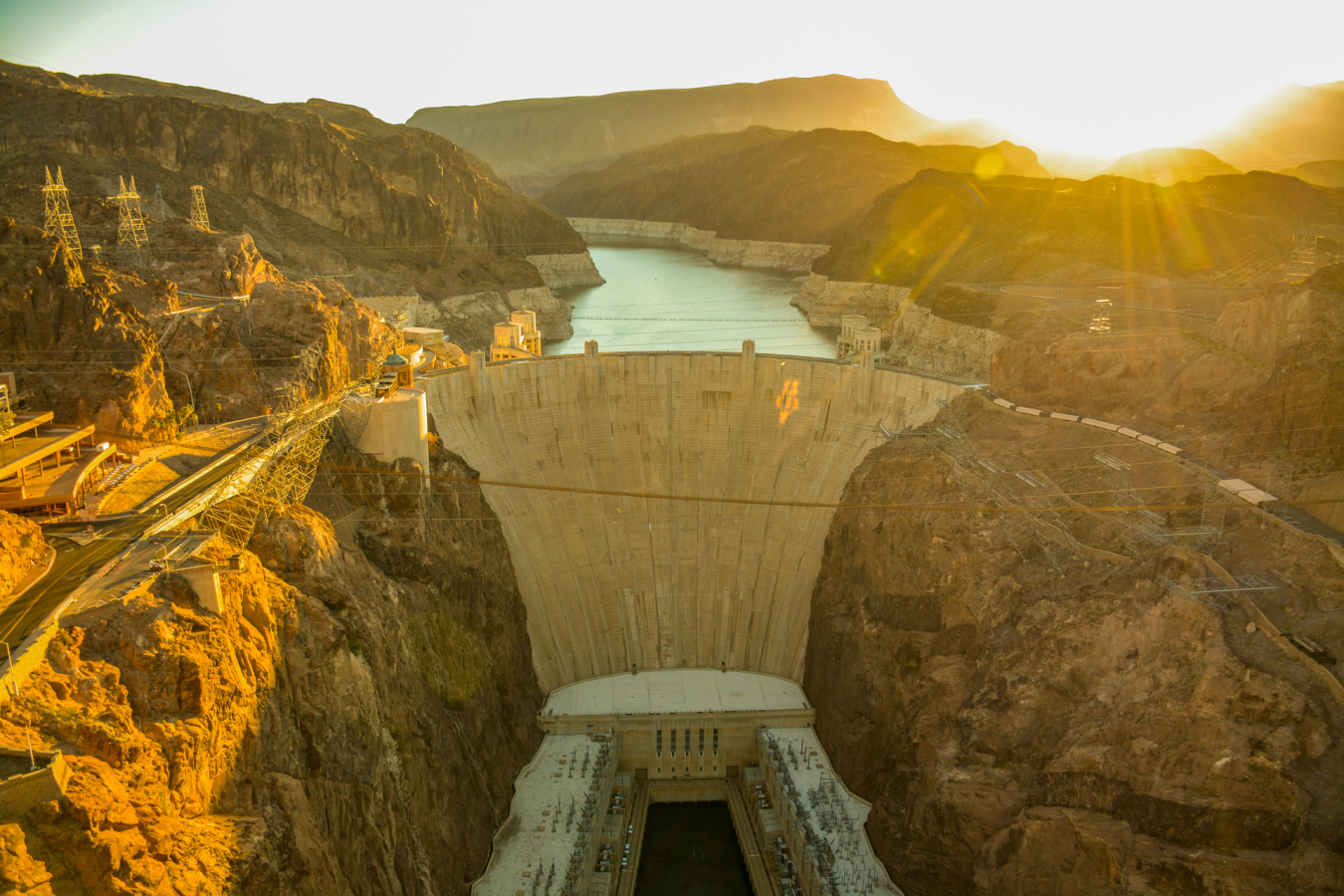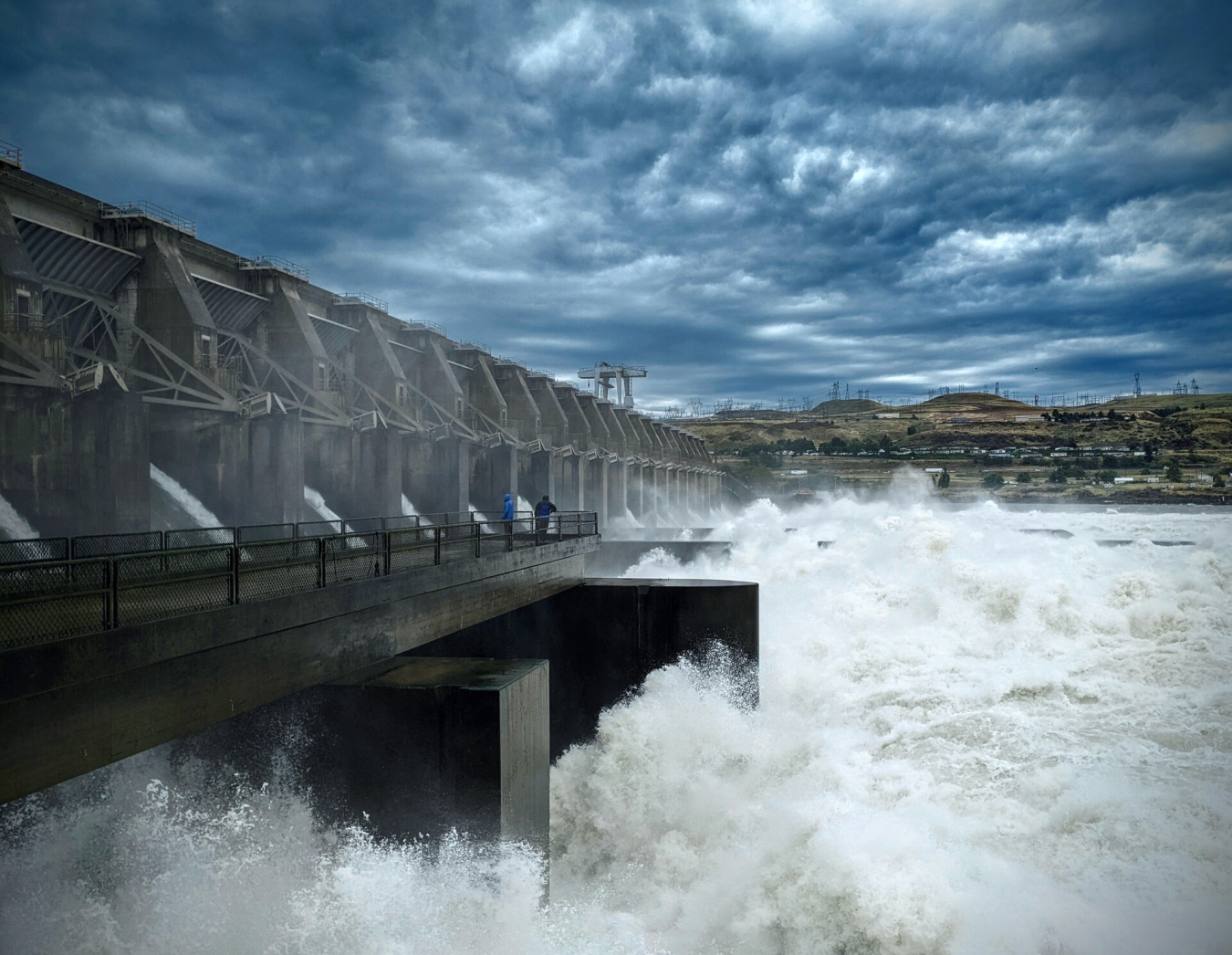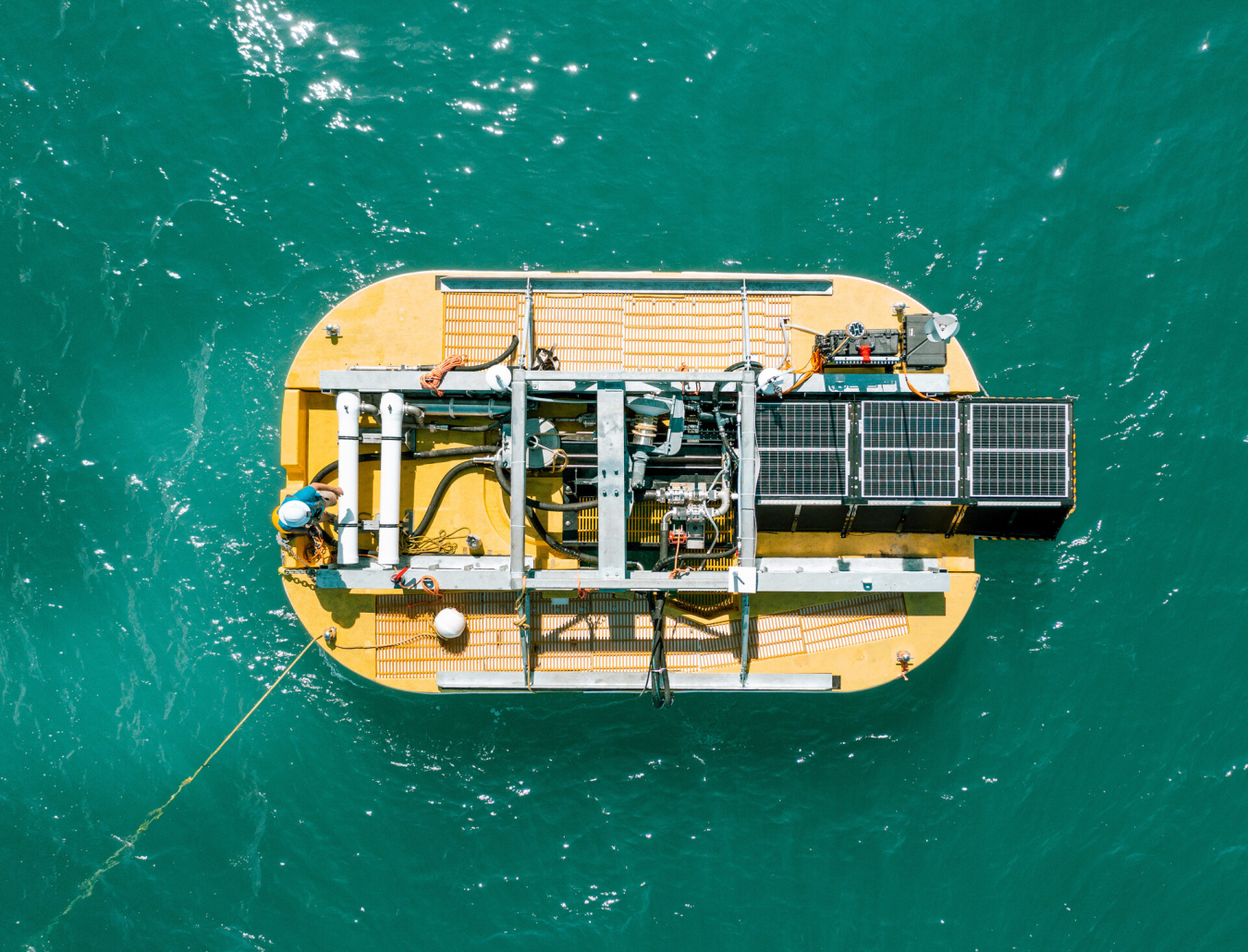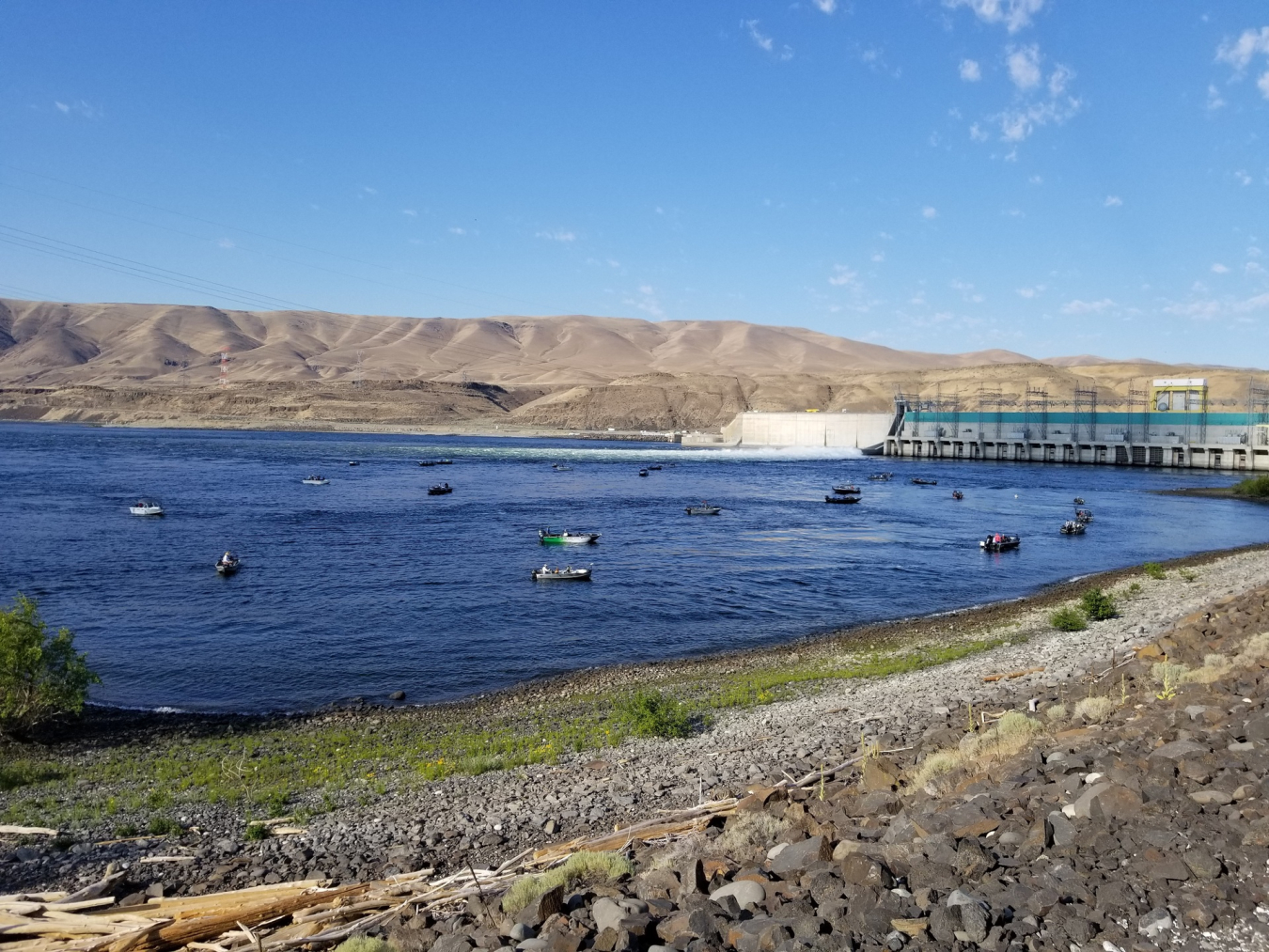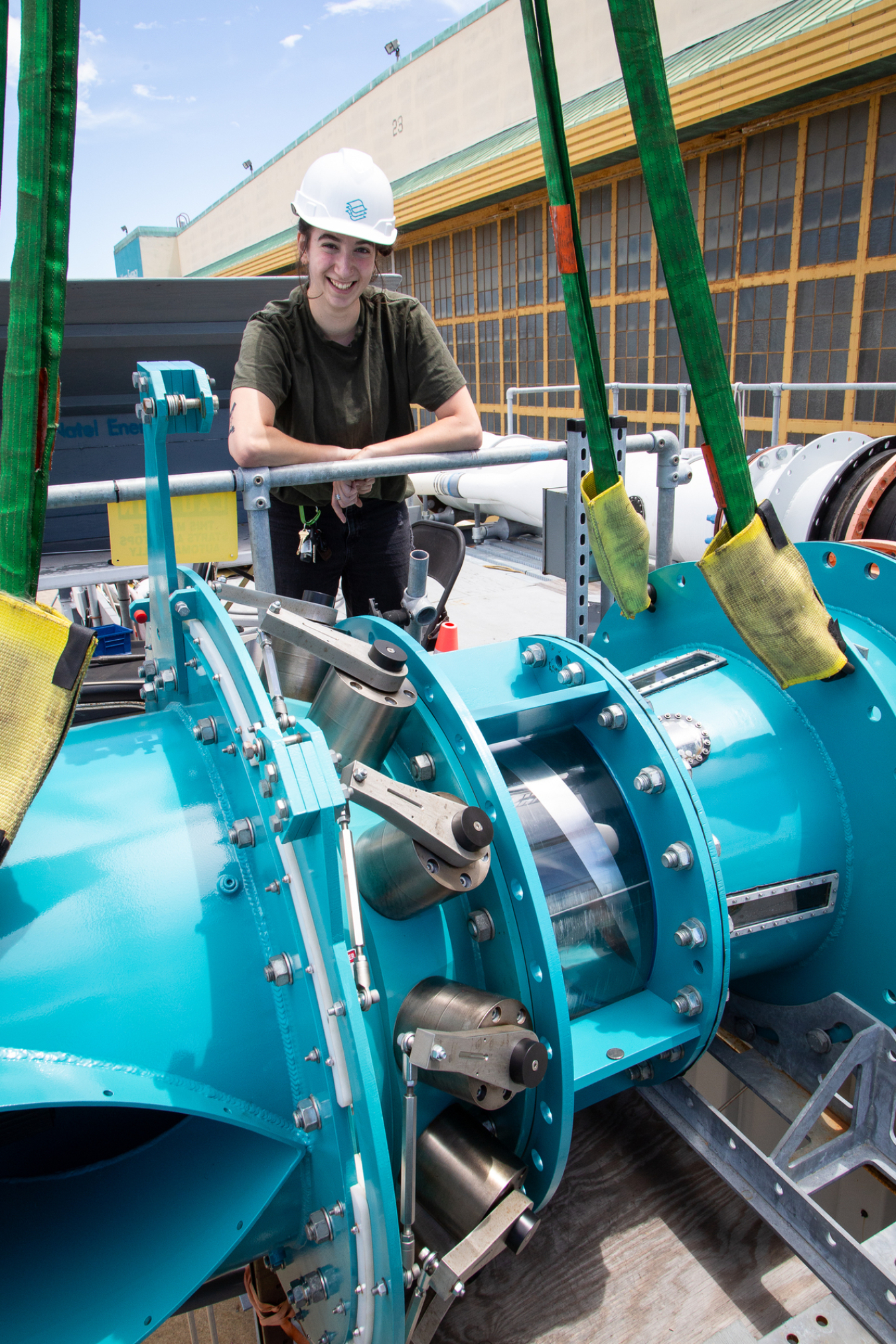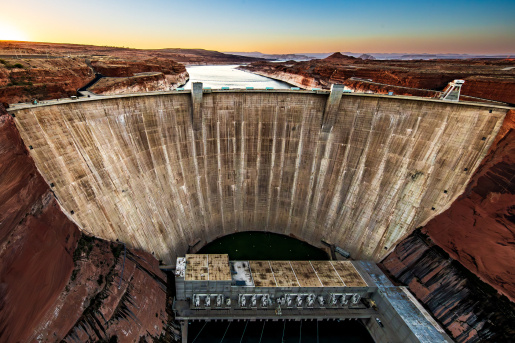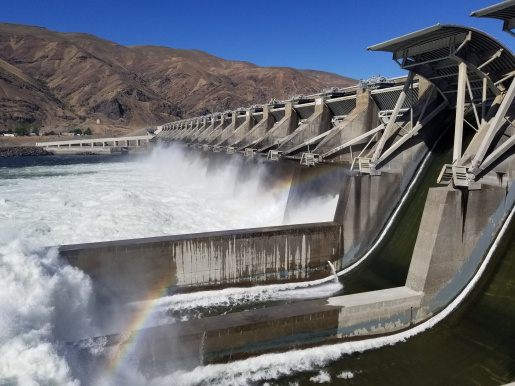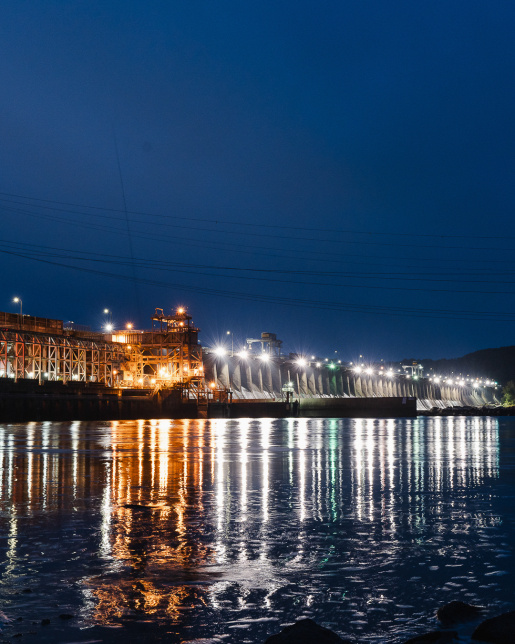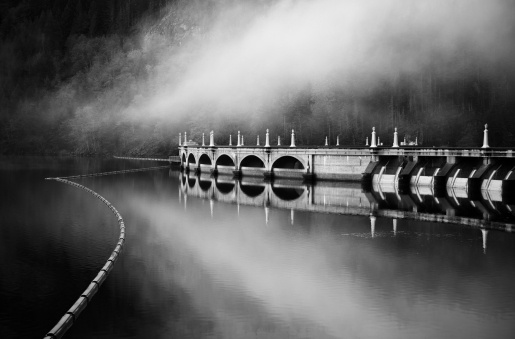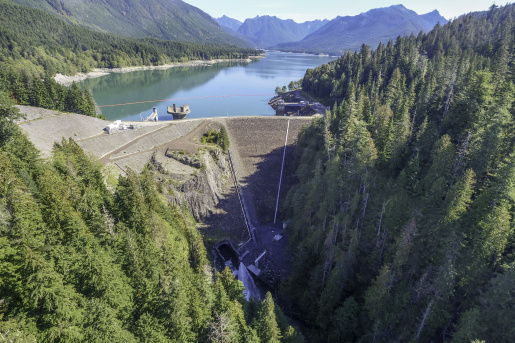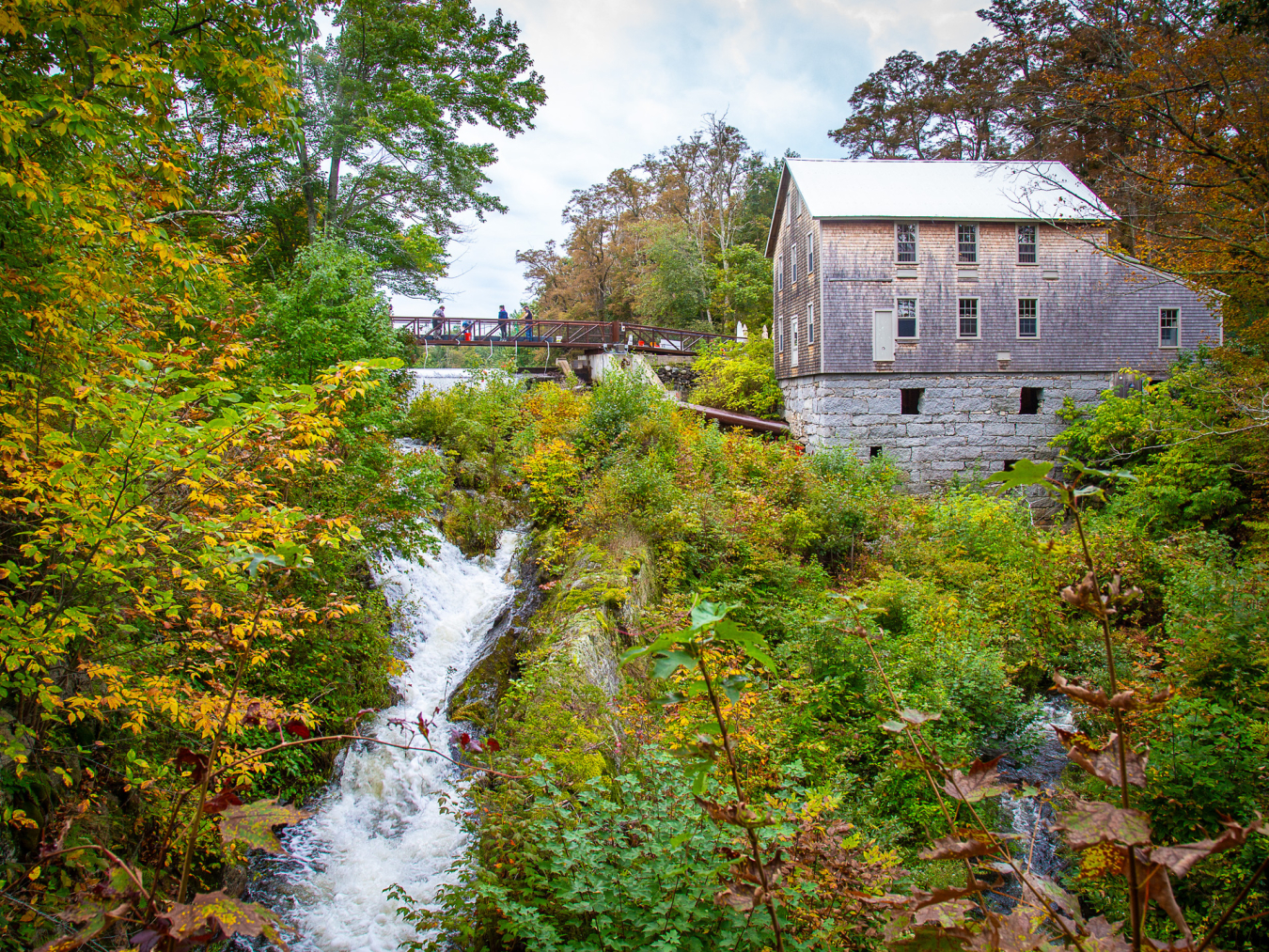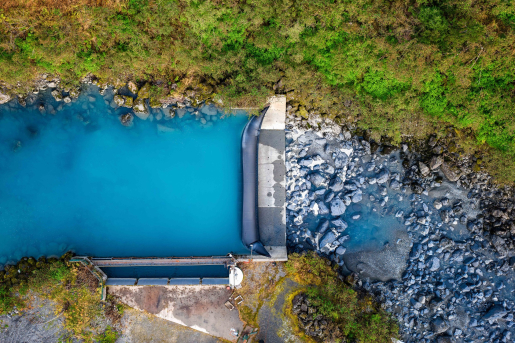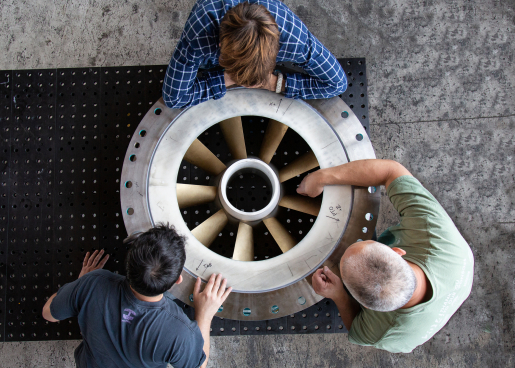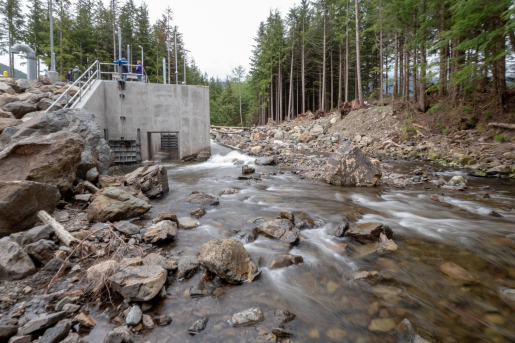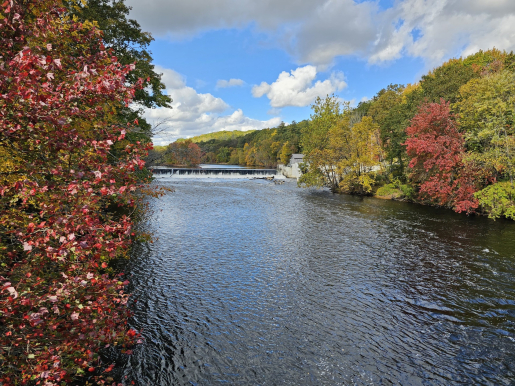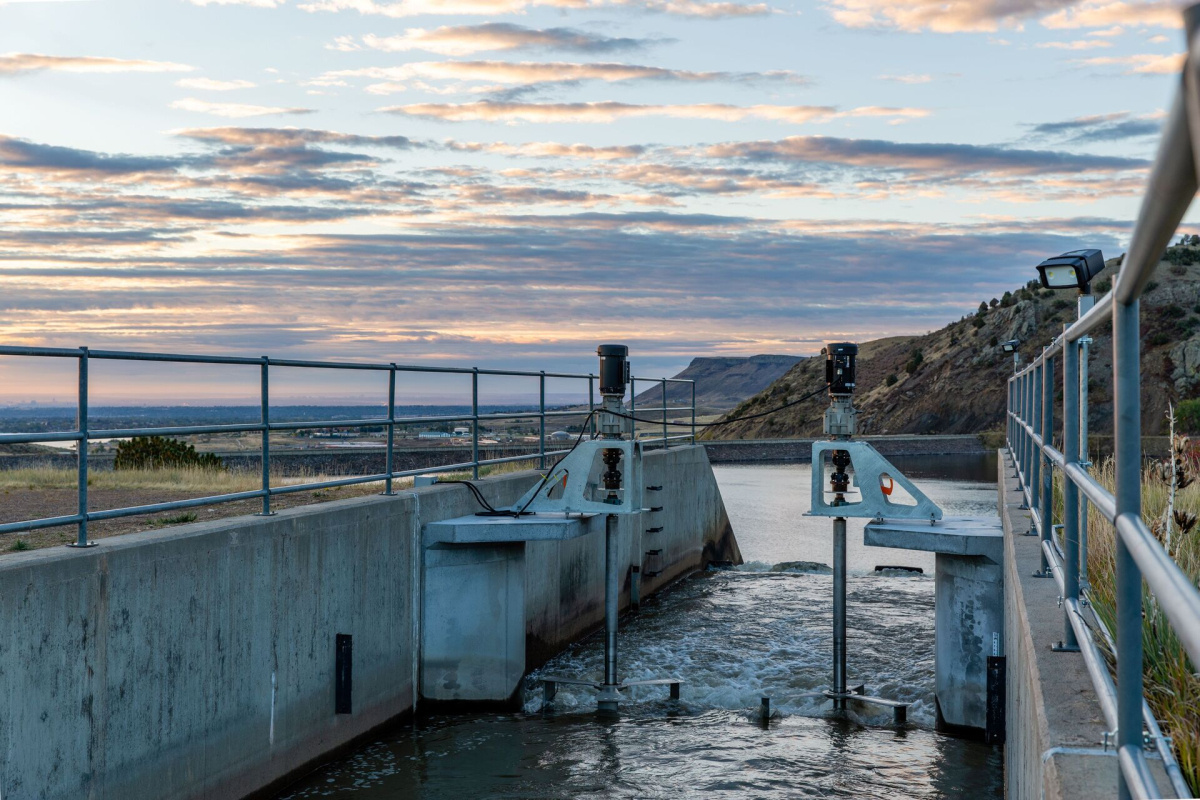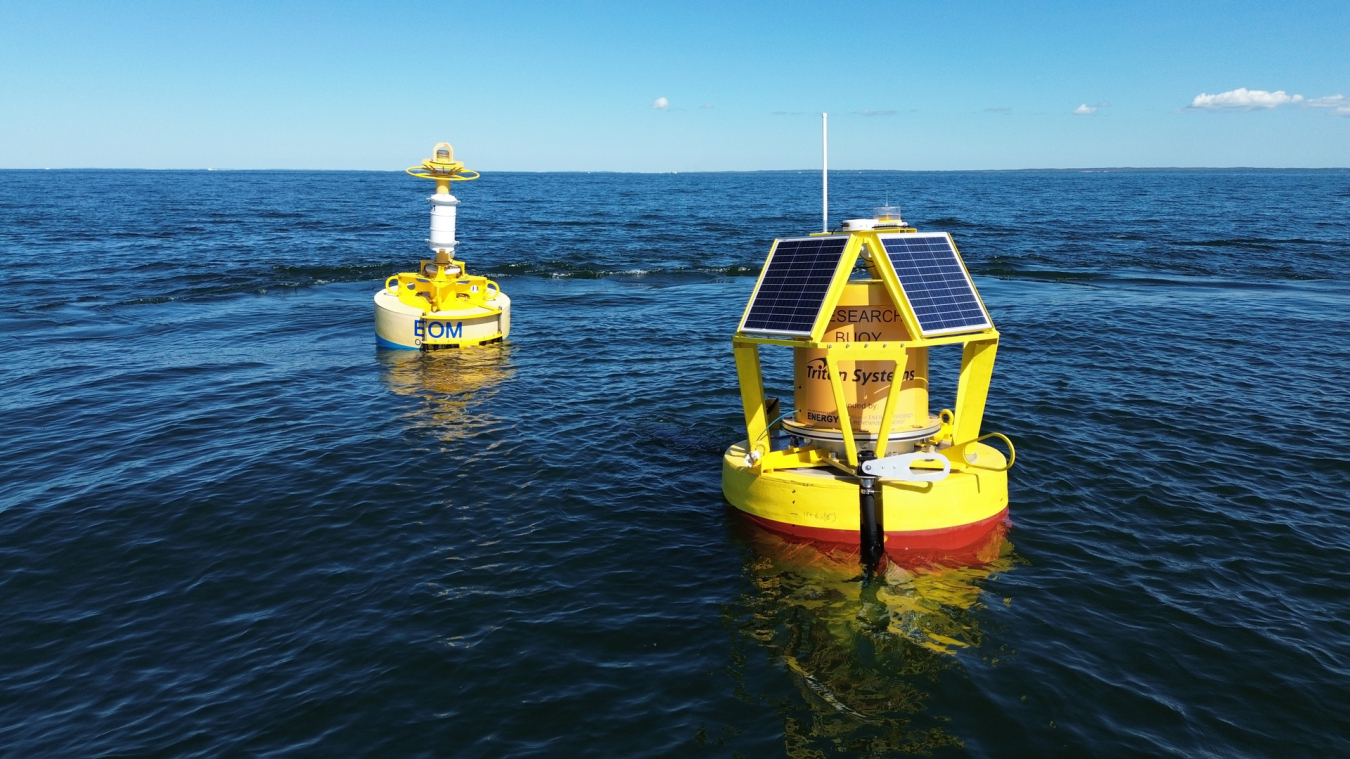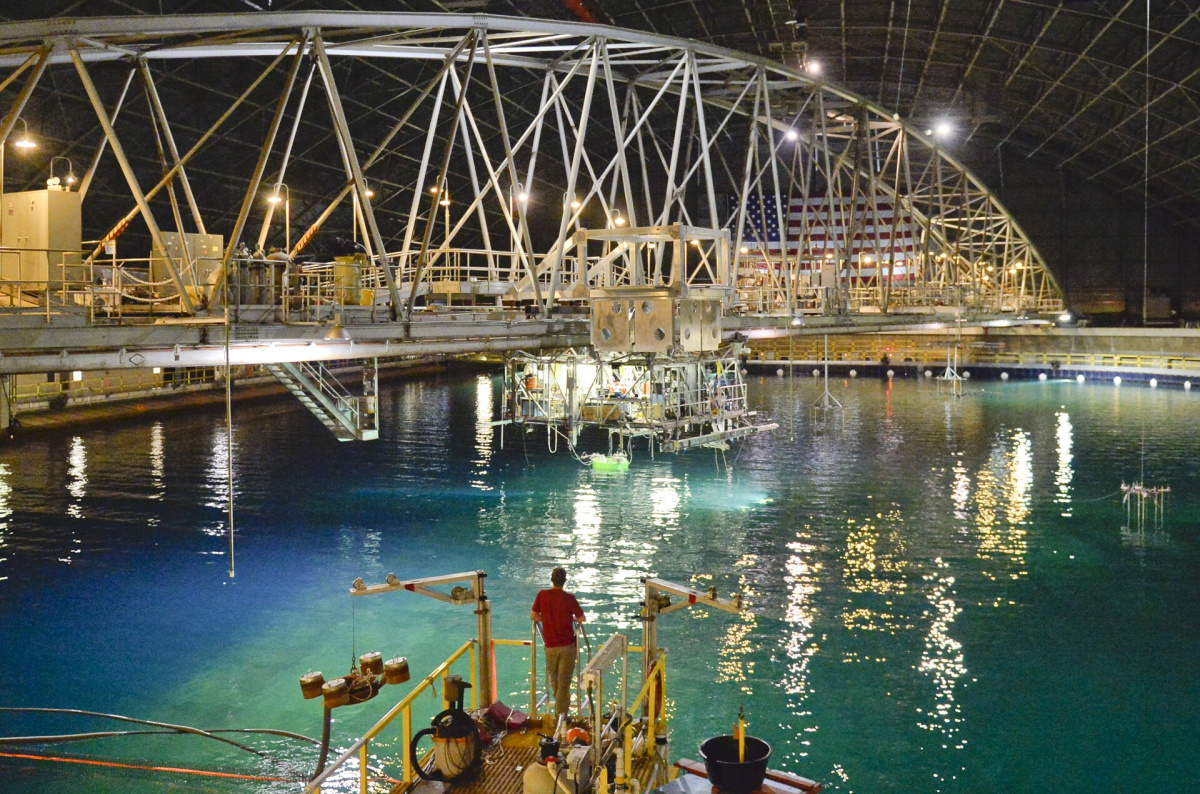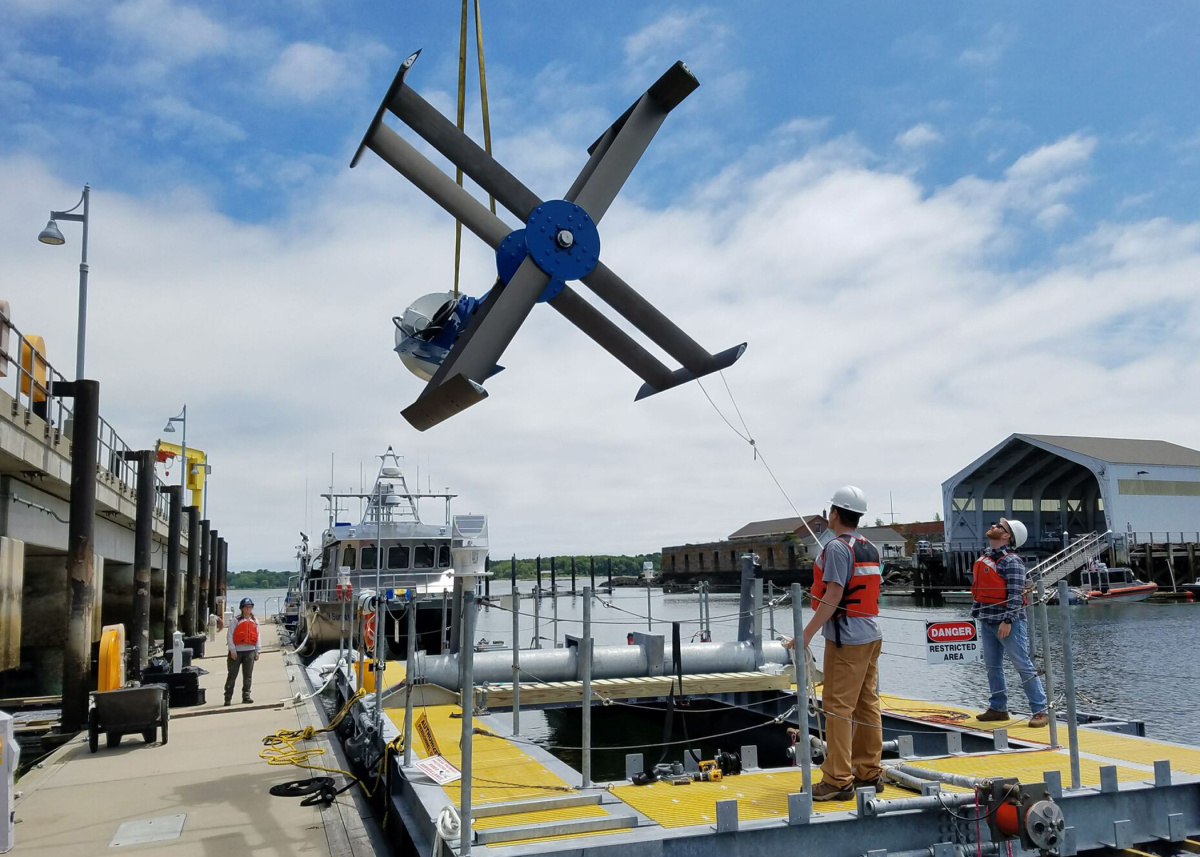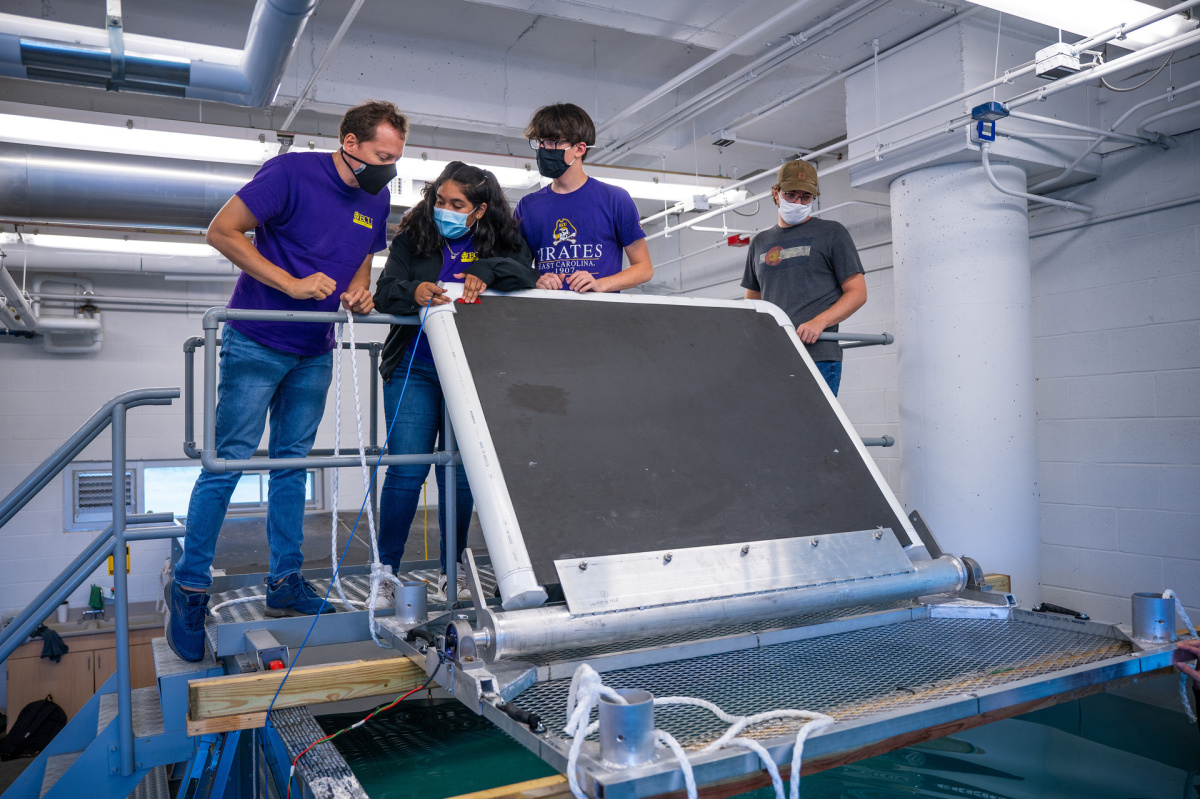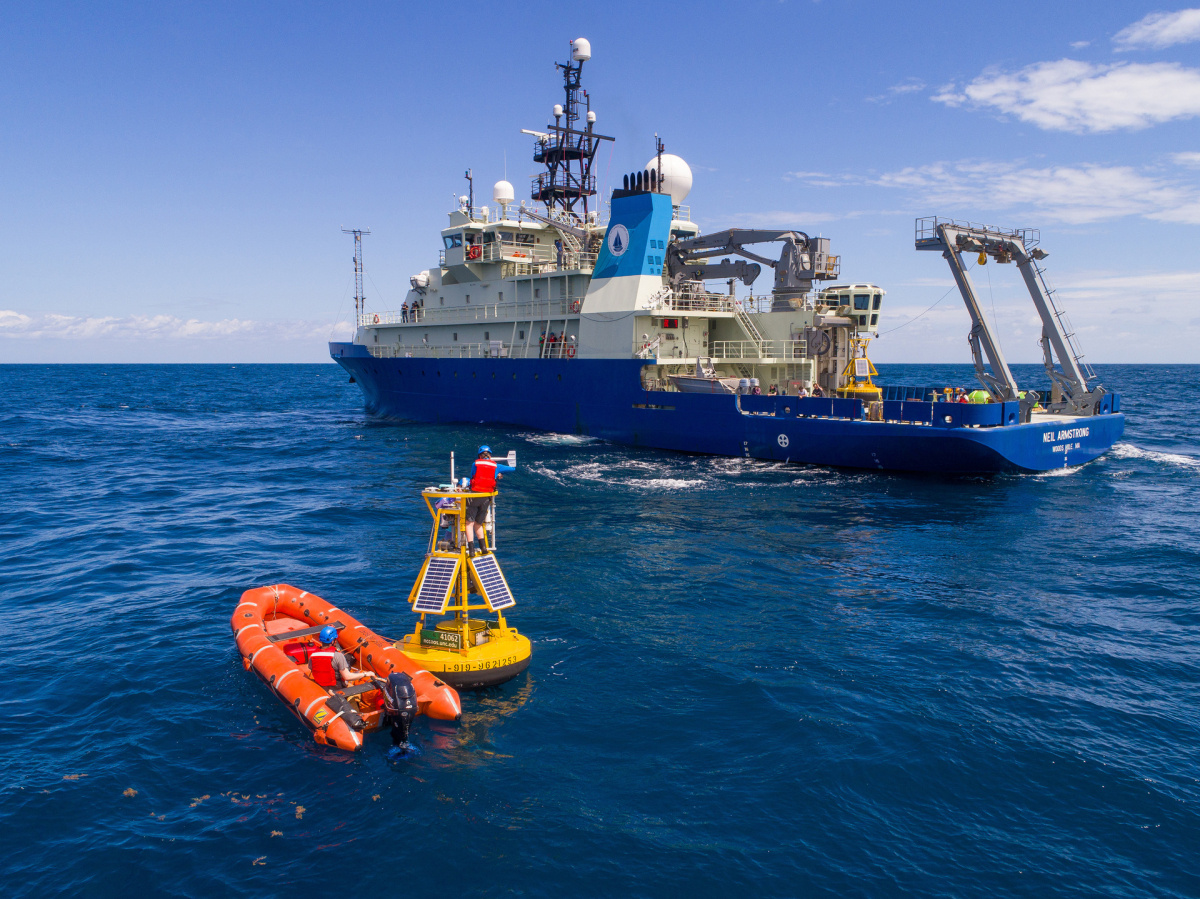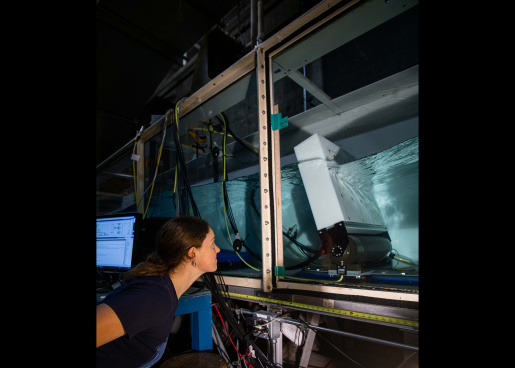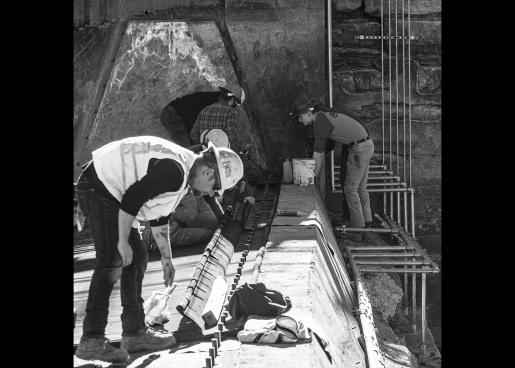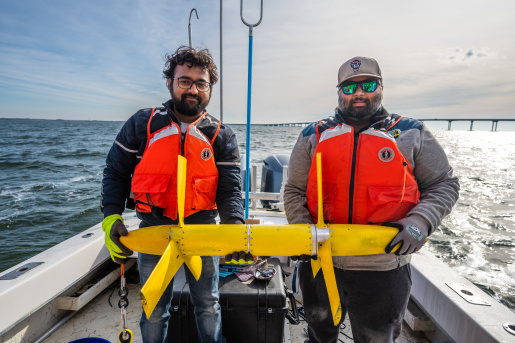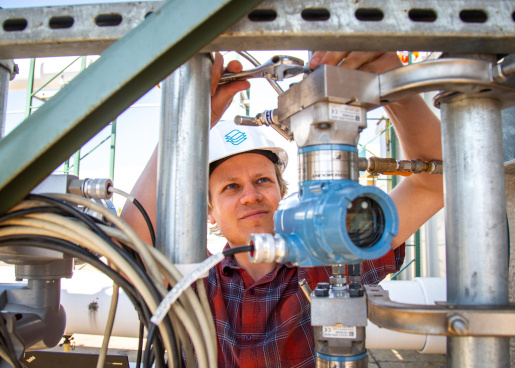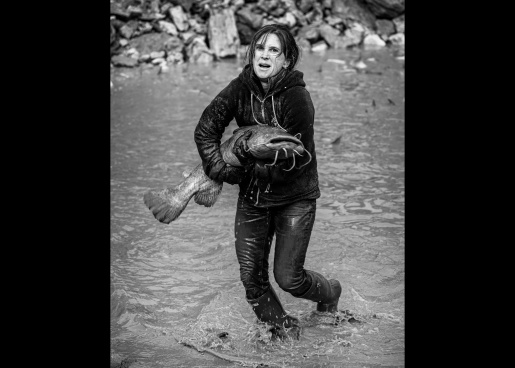Blog
U.S. Department of Energy Announces Water Power Photo and Video Contest Winners
The U.S. Department of Energy's Water Power Technologies Office today announced the 22 winners of the Make a Splash Photo and Video Contest.
Water Power Technologies Office
February 20, 2024
 min
minute read time
min
minute read time
The U.S. Department of Energy's (DOE) Water Power Technologies Office (WPTO) today announced the 22 winners of the Make a Splash Photo and Video Contest. Photographers and videographers, including professionals and amateurs, submitted awe-inspiring content that showcased water power technologies across hydropower and marine energy, research and development activities, infrastructure, and the people behind the sector.
"We received incredible photo and video submissions depicting many water power technologies and the people who make them possible," said Jennifer Garson, WPTO Director. "Hydropower and marine energy have an important role on our clean energy system, and it's exciting to share these new photos and videos showing what these technologies can do."
The winners were selected from a pool of more than 360 submissions from 52 competitors. Eligible winners will receive $2,000 for first place, $1,000 for second place, and $500 for third place across eight categories. Federal employees were eligible for recognition awards only. The winners are featured on the DOE Flickr account, and other eligible submissions will be posted soon. These photos and videos are available to the public and also may be used in DOE outreach materials.
First Place: Conventional Hydropower and Pumped Storage
- Connie Castle from Boulder City, Nevada
- Amber Tilton from Portland, Oregon
Second and Third Place Winners for Conventional Hydropower and Pumped Storage
- Second place winner: Arnel Garcia from San Diego, California
- Third place winner: Dave Dempsey from Ephrata, Washington
- Third place winner: Abraham Harris from Hyattsville, Maryland
- Third place winner: Pablo McLoud from Volcano, Hawaii
- Third place winner: Krysta Rasmussen from Everett, Washington
Caption
Glen Canyon Dam in Arizona. Arnel Garcia, the photographer, noted he was awestruck when he saw the Glen Canyon Dam while driving through Arizona. He had to park, appreciate, and capture this engineering marvel along the Colorado River.
Caption
Priest Rapids Dam on the Columbia River in Washington.
Credit
Dave Dempsey, Grant County Public Utility District
Caption
Conowingo Dam in Maryland. Known for eagle watching and fishing, Conowingo Dam was the subject of Abraham's lens during the early morning golden hour.
Caption
Diablo Dam in Washington. Pablo McLoud, the photographer, insists the curve, artistry, and setting of Diablo Dam in Washington deserves accolades and recognition.
Caption
Culmback Dam at the Jackson Hydroelectric Project in Washington.
Credit
Krysta Rasmussen, Snohomish County Public Utility District
Caption
Glen Canyon Dam in Arizona. Arnel Garcia, the photographer, noted he was awestruck when he saw the Glen Canyon Dam while driving through Arizona. He had to park, appreciate, and capture this engineering marvel along the Colorado River.
Glen Canyon Dam in Arizona. Arnel Garcia, the photographer, noted he was awestruck when he saw the Glen Canyon Dam while driving through Arizona. He had to park, appreciate, and capture this engineering marvel along the Colorado River.
Caption
Priest Rapids Dam on the Columbia River in Washington.
Credit
Dave Dempsey, Grant County Public Utility District
Priest Rapids Dam on the Columbia River in Washington.
Dave Dempsey, Grant County Public Utility District
Caption
Conowingo Dam in Maryland. Known for eagle watching and fishing, Conowingo Dam was the subject of Abraham's lens during the early morning golden hour.
Conowingo Dam in Maryland. Known for eagle watching and fishing, Conowingo Dam was the subject of Abraham's lens during the early morning golden hour.
Caption
Diablo Dam in Washington. Pablo McLoud, the photographer, insists the curve, artistry, and setting of Diablo Dam in Washington deserves accolades and recognition.
Diablo Dam in Washington. Pablo McLoud, the photographer, insists the curve, artistry, and setting of Diablo Dam in Washington deserves accolades and recognition.
Caption
Culmback Dam at the Jackson Hydroelectric Project in Washington.
Credit
Krysta Rasmussen, Snohomish County Public Utility District
Culmback Dam at the Jackson Hydroelectric Project in Washington.
Krysta Rasmussen, Snohomish County Public Utility District
First Place: Small, Distributed, or Low-Impact Hydropower
- Kate Stirr from Alameda, California
Second and Third Place Winners for Small, Distributed, or Low-Impact Hydropower
- Second place winner: Seed Media from Valdez, Alaska
- Third place winner: Andrew Baumgartner from Alameda, California
- Third place winner: Krysta Rasmussen from Everett, Washington
- Third place winner: Chris Conover from Beverly, Massachusetts
- Third place winner: Sean Kenney from Atlanta, Georgia
Caption
Power Creek Dam Project in Cordova, Alaska. The Power Creek hydroelectric plant is located 7 miles east of Cordova and has a total installed generating capacity of 6 megawatts. Photo taken by Levi Rowland, edited by Deanna Kendall, and released by Thomas Tapp, Seed Media
Caption
Natel's mechanical team in California prototypes a guide vane housing for a scale-model turbine used in fish passage testing at their hydraulic test facility.
Credit
Andrew Baumgartner, Natel
Caption
Hancock Hydroelectric Creekside Intake in Washington. Snohomish County Public Utility District's Hancock Creek Hydroelectric Project is a 6-megawatt run-of-river hydroelectric generating facility.
Credit
Krysta Rasmussen, Snohomish County Public Utility District
Caption
View downriver from the Albion hydropower dam in Cumberland, Rhode Island.
Credit
Chris Conover, New England Hydropower Company
Caption
Sunset view of Emrgy's distributed hydropower project in Colorado. The image shows the renewable energy potential from canal waterways.
Credit
Sean Kenney, Emrgy
Caption
Power Creek Dam Project in Cordova, Alaska. The Power Creek hydroelectric plant is located 7 miles east of Cordova and has a total installed generating capacity of 6 megawatts. Photo taken by Levi Rowland, edited by Deanna Kendall, and released by Thomas Tapp, Seed Media
Power Creek Dam Project in Cordova, Alaska. The Power Creek hydroelectric plant is located 7 miles east of Cordova and has a total installed generating capacity of 6 megawatts. Photo taken by Levi Rowland, edited by Deanna Kendall, and released by Thomas Tapp, Seed Media
Caption
Natel's mechanical team in California prototypes a guide vane housing for a scale-model turbine used in fish passage testing at their hydraulic test facility.
Credit
Andrew Baumgartner, Natel
Natel's mechanical team in California prototypes a guide vane housing for a scale-model turbine used in fish passage testing at their hydraulic test facility.
Andrew Baumgartner, Natel
Caption
Hancock Hydroelectric Creekside Intake in Washington. Snohomish County Public Utility District's Hancock Creek Hydroelectric Project is a 6-megawatt run-of-river hydroelectric generating facility.
Credit
Krysta Rasmussen, Snohomish County Public Utility District
Hancock Hydroelectric Creekside Intake in Washington. Snohomish County Public Utility District's Hancock Creek Hydroelectric Project is a 6-megawatt run-of-river hydroelectric generating facility.
Krysta Rasmussen, Snohomish County Public Utility District
Caption
View downriver from the Albion hydropower dam in Cumberland, Rhode Island.
Credit
Chris Conover, New England Hydropower Company
View downriver from the Albion hydropower dam in Cumberland, Rhode Island.
Chris Conover, New England Hydropower Company
Caption
Sunset view of Emrgy's distributed hydropower project in Colorado. The image shows the renewable energy potential from canal waterways.
Credit
Sean Kenney, Emrgy
Sunset view of Emrgy's distributed hydropower project in Colorado. The image shows the renewable energy potential from canal waterways.
First Place: Hydropower Technologies Video
- Seed Media from Valdez, Alaska
Check out the videos that placed second and third in this category:
First Place Winner: Marine Energy
- Oneka Technologies from Fort Pierce, Florida
- Lynn Spinnato from Setauket, New York
First Place Winner: Powering the Blue Economy™
- Tyler Robertson from Chelmsford, Massachusetts
Second and Third Place Winners for Marine Energy and Powering the Blue Economy
- Second place winner Marine Energy: Philip Irwin from New Bedford, Massachusetts
- Third place winner Marine Energy: Martin Wosnik from Newmarket, New Hampshire
- Second place winner Powering the Blue Economy: John McCord from Manteo, North Carolina
- Third place winner Powering the Blue Economy: John McCord from Manteo, North Carolina
Caption
Pure Marine's DUO wave energy device being tested at the U.S. Navy's Maneuvering and Seakeeping Basin (MASK) facility in Carderock, Maryland.
Credit
Philip Irwin, Pure Marine Gen Ltd
Caption
Tidal turbine being loaded onto a test platform in New Hampshire.
Credit
Martin Wosnik, University of New Hampshire
Caption
Undergraduate students and a professor from East Carolina University (ECU) make last-minute preparations before testing their surge wave energy converter in the wave tank at the Coastal Studies Institute on the ECU Outer Banks Campus in North Carolina.
Credit
John McCord, Coastal Studies Institute
Caption
A weather buoy equipped with conductivity, temperature, and depth sensors and acoustic doppler current profilers below the surface being deployed off the R/V Neil Armstrong in North Carolina. A series of these buoys were used to track the movement of the Hatteras front, the boundary between the Mid-Atlantic Bight water to the north and the South Atlantic Bight water to the south along the continental shelf.
Credit
John McCord, Coastal Studies Institute
Caption
Pure Marine's DUO wave energy device being tested at the U.S. Navy's Maneuvering and Seakeeping Basin (MASK) facility in Carderock, Maryland.
Credit
Philip Irwin, Pure Marine Gen Ltd
Pure Marine's DUO wave energy device being tested at the U.S. Navy's Maneuvering and Seakeeping Basin (MASK) facility in Carderock, Maryland.
Philip Irwin, Pure Marine Gen Ltd
Caption
Tidal turbine being loaded onto a test platform in New Hampshire.
Credit
Martin Wosnik, University of New Hampshire
Tidal turbine being loaded onto a test platform in New Hampshire.
Martin Wosnik, University of New Hampshire
Caption
Undergraduate students and a professor from East Carolina University (ECU) make last-minute preparations before testing their surge wave energy converter in the wave tank at the Coastal Studies Institute on the ECU Outer Banks Campus in North Carolina.
Credit
John McCord, Coastal Studies Institute
Undergraduate students and a professor from East Carolina University (ECU) make last-minute preparations before testing their surge wave energy converter in the wave tank at the Coastal Studies Institute on the ECU Outer Banks Campus in North Carolina.
John McCord, Coastal Studies Institute
Caption
A weather buoy equipped with conductivity, temperature, and depth sensors and acoustic doppler current profilers below the surface being deployed off the R/V Neil Armstrong in North Carolina. A series of these buoys were used to track the movement of the Hatteras front, the boundary between the Mid-Atlantic Bight water to the north and the South Atlantic Bight water to the south along the continental shelf.
Credit
John McCord, Coastal Studies Institute
A weather buoy equipped with conductivity, temperature, and depth sensors and acoustic doppler current profilers below the surface being deployed off the R/V Neil Armstrong in North Carolina. A series of these buoys were used to track the movement of the Hatteras front, the boundary between the Mid-Atlantic Bight water to the north and the South Atlantic Bight water to the south along the continental shelf.
John McCord, Coastal Studies Institute
First Place Winner: Marine Energy Technologies Video
- Oneka Technologies from Fort Pierce, Florida
Check out the videos that placed second and third in this category:
First Place Winner: Communities Powered by Water
- Dave Dempsey from Ephrata, Washington
First Place Winner: Faces of Water Power
- Elizabeth (Betsy) Pfeiffer from Alameda, California
Second and Third Place Winners for Faces of Water Power
- Second place winner: Abigale Snortland from Seattle, Washington
- Second place winner: Dan Hughes from Lawrence, Kansas
- Third place winner: John McCord from Manteo, North Carolina
- Third place winner: Andrew Baumgartner from Alameda, California
- Third place winner: Dan Hughes from Lawrence, Kansas
Caption
Ama Hartman, staff engineer in the Marine Renewable Energy Lab at the University of Washington, with the oscillating wave energy converter test article that she investigates at the Washington Air-Sea Interaction Research Facility. The newly completed test article will be used for several research projects to better understand the dynamics and control of this class of wave energy converter.
Credit
Abigale Snortland, University of Washington
Caption
Workers at Bowersock hydropower plant in Lawrence, Kansas.
Caption
Researchers from North Carolina State University pose with their coaxial turbine after successful tow testing in the Croatan Sound in the Outer Banks of North Carolina.
Credit
John McCord, Coastal Studies Institute
Caption
Ian Gagnon adjusts sensors that measure hydraulic efficiency at Natel Energy’s hydraulic test facility in Alameda, California.
Credit
Andrew Baumgartner, Natel
Caption
A worker moves catfish during cofferdam construction at Bowersock hydropower plant in Lawrence, Kansas.
Caption
Ama Hartman, staff engineer in the Marine Renewable Energy Lab at the University of Washington, with the oscillating wave energy converter test article that she investigates at the Washington Air-Sea Interaction Research Facility. The newly completed test article will be used for several research projects to better understand the dynamics and control of this class of wave energy converter.
Credit
Abigale Snortland, University of Washington
Ama Hartman, staff engineer in the Marine Renewable Energy Lab at the University of Washington, with the oscillating wave energy converter test article that she investigates at the Washington Air-Sea Interaction Research Facility. The newly completed test article will be used for several research projects to better understand the dynamics and control of this class of wave energy converter.
Abigale Snortland, University of Washington
Caption
Workers at Bowersock hydropower plant in Lawrence, Kansas.
Workers at Bowersock hydropower plant in Lawrence, Kansas.
Caption
Researchers from North Carolina State University pose with their coaxial turbine after successful tow testing in the Croatan Sound in the Outer Banks of North Carolina.
Credit
John McCord, Coastal Studies Institute
Researchers from North Carolina State University pose with their coaxial turbine after successful tow testing in the Croatan Sound in the Outer Banks of North Carolina.
John McCord, Coastal Studies Institute
Caption
Ian Gagnon adjusts sensors that measure hydraulic efficiency at Natel Energy’s hydraulic test facility in Alameda, California.
Credit
Andrew Baumgartner, Natel
Ian Gagnon adjusts sensors that measure hydraulic efficiency at Natel Energy’s hydraulic test facility in Alameda, California.
Andrew Baumgartner, Natel
Caption
A worker moves catfish during cofferdam construction at Bowersock hydropower plant in Lawrence, Kansas.
A worker moves catfish during cofferdam construction at Bowersock hydropower plant in Lawrence, Kansas.
